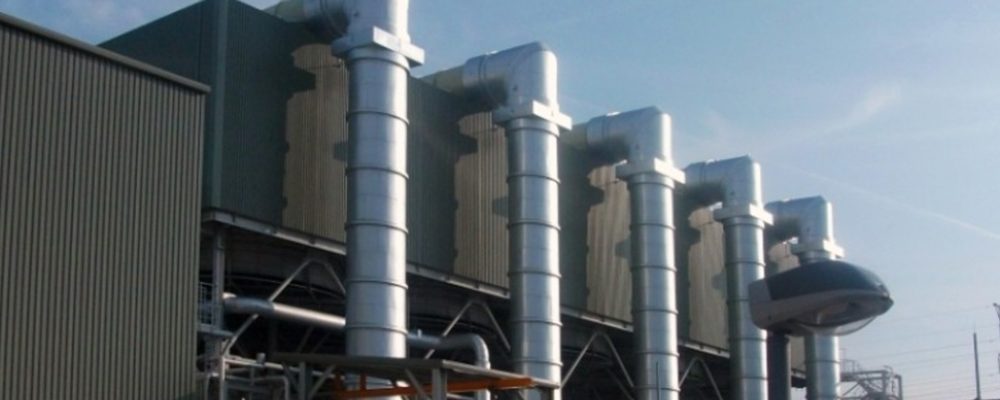The Challenges of Soundproofing in a Power Station Environment
The fact that power stations produce high levels of noise won’t come as much of a surprise to anyone who has spent more than a few minutes inside one. Quite how dangerous these levels of noise can be, however, might.
How Loud is ‘Too Loud’?
To give you an idea of the sensitivity of the human ear, the average person can hear sounds down to about 0 decibels (dB), the equivalent of a whisper or rustling leaves, and people with exceptional hearing can detect sounds as low as -15dB.
It is at the other end of the scale, however, that serious problems can occur. At around 85dB, you are likely to experience discomfort. As little as eight hours of continuous exposure to this level of noise can result in permanent damage to the inner ear, which is why 85dB is the maximum allowed under the Noise at Work Regulations. At 100dB, just fifteen minutes of exposure can cause permanent damage. And at 110dB the exposure time drops to around a minute before harm is inflicted. Pain is experienced at 125dB and hearing loss can be permanent. At 140dB or above not only is the damage permanent, it is also immediate.
The Noise at Work Regulations stipulate that an ‘employer shall ensure that risk from the exposure to noise is either eliminated at source or, where this is not reasonably practicable, reduced to as low a level as is reasonably practicable.” And that “if any employee is likely to be exposed to noise at or above an upper exposure action value, the employer shall reduce exposure to as low a level as is reasonably practicable by establishing and implementing a programme of organisational and technical measures, excluding the provision of personal hearing protectors, which is appropriate to the activity.” In other words, an employer is expected to do everything they can, within reason, to protect their employees from the harmful effects of noise. And, no, it isn’t enough to simply supply a pair of ear-defenders.
Noise-Induced Hearing Loss
The damage caused by these dangerous levels of noise is referred to as Noise-Induced Hearing Loss or NIHL. NIHL can be caused by a single exposure to a very loud sound or by repeated exposure to even relatively low levels of noise over a long time span. In fact, according to research carried out by Xiaoming Zhou from the East China Normal University in Shanghai, even seemingly innocuous sounds, such as the whirr of a desk fan, can cause damage if exposure is consistent and long-term.
To understand how NIHL occurs, it’s necessary to understand how hearing works.
The generally accepted view is that sound waves strike the eardrum and these vibrations are translated into coherent information by the brain. It is slightly more complex than that. Sound waves do, indeed, strike the eardrum, causing the eardrum to vibrate. These vibrations are then transmitted through the ossicles (the small bones of the middle ear) to the cochlea, a spiral-shaped chamber filled with fluid and lined with tiny hair cells called stereocilia. The vibrations cause the fluid to move which, in turn, causes the stereocilia to move. The stereocilia’s movements generate neural signals with are picked up by the auditory nerve which ‘forwards’ these signals onto the brain where they are interpreted as intelligible sounds human speech, music, the beep of car horn etc.
Exposure to the harmful levels of noise mentioned above can damage the stereocilia, breaking them or flattening them so they no longer vibrate as effectively or so they no longer vibrate at all. The result: impaired hearing or, in extreme cases, total hearing loss.
The noise recorded coming from the dry cooling system at the Severn Power CCGT Power Station at Uskmouth B was between 130dB(A) and 135dB(A), a full 50dB above Noise at Work Regulations’ acceptable levels. Regarding dB(A), the human ear does not hear all frequencies with the same intensity. It is most sensitive to sounds in the 500Hz-8kHz range. Above and below this range the ear becomes progressively less sensitive. To compensate for this, sound level meters incorporate electronic filtering to correspond to the varying sensitivities of the ear. This filtering is called A-weighting and readings obtained with this weighting are referred to as A-weighted and signified as dB(A).
The Wrong Kind of Noise
Although it was identified that the dry cooling system from SPX Cooling Technologies was generating these dangerous and unacceptable levels of noise, it wasn’t the cooling system that was creating the noise. In fact, it was the turbines that were the source of the noise. The steam roaring from the turbines at incredibly high speeds enters the main 5.5m steam ducts, passes up five risers and is channeled into the steam distribution manifolds. Not only does the steam enter the dry cooling system, the accompanying noise does, too. You might think that the 8mm thick steel from which the ducts are constructed would go some way to containing the din. Unfortunately, steel is extremely adept at transmitting noise and is, in many respects, the acoustician’s worst enemy.
To make matters worse, when acoustics and soundproofing specialists, CMS Danskin Acoustics, were brought in by SPX and Uskmouth’s main contractors, Siemens, they discovered not only high levels of noise but also that the noise generated had a very low-frequency bias. Low-frequency noise is the most difficult to treat from a soundproofing perspective due to the excessive length of the wave cycle. This is one of the reasons people in apartments, terraced houses and semi-detached homes will often complain of the problems of bass noises intruding from neighbouring properties, as the walls and floors filter out the higher frequencies whilst the lower frequencies manage to penetrate. This can seem a little counterintuitive, as we imagine higher frequency noise to be more piercing. Their short wave-cycle, however, means they can be blocked out with relatively thin soundproofing materials.
The low-frequency nature of the noise also meant that this wasn’t just a Noise at Work Regulations problem. Low-frequency noise can be particularly problematic to the population in the vicinity of the source of that noise. Low frequency noise is often not even ‘heard’ in the traditional sense. Complainants often won’t even realise that noise is the problem at all; instead they will describe ‘pressure sensations’ and ‘physical discomfort’, experiencing the incursion as vibrations. Areas of the human body can resonate when exposed to low frequencies. The chest, for example, can resonate at frequencies between 50Hz and 100Hz, and the head at frequencies between 20Hz and 30Hz. It isn’t unusual, therefore, for sufferers of low frequency noise to complain of anxiety, nausea and headaches. Often, they won’t even be aware of the root cause of their symptoms, instead attributing them to a virus or some mystery illness.
A New Approach and a Sound Solution
Solutions for low-frequency noise issues typically involve wrapping the problem in significant quantities of acoustic insulation, with many standard solutions being as deep as 500mm to 700mm. The sheer volume of lagging required for an insulation-based approach to a project like Uskmouth, with a daunting 8,000m2 of ducting to be covered, would be expensive, time-consuming to install and prohibitively disruptive. What’s more, there were areas around the ducting at Uskmouth which simply wouldn’t have been able to accommodate such an excessive construction height of soundproofing material.
Paul Absolon, CMS Danskin Acoustics’ Technical Director, responded to the challenge of creating a ‘thinner’ soundproofing system that would meet the necessary Noise at Work Regulations requirements but would be cost-effective and efficient to install. In order to minimise disruption to Uskmouth, an off-site simulation was created near Burton on Trent, using a large section of identical ducting with a ‘door’ sealing up either end. Within the duct were several very powerful speakers. For testing, highly sensitive microphones were placed in strategic positions along the outside of the duct to measure any ‘leakage’. Acoustic insulation solutions were conceived, implemented and assessed in this controlled environment with the assistance of Acoustic Consultants Muller-BBM and the installation company Western Thermal Insulations.
Exploring a wide range of acoustic materials from CMS Danskin Acoustics’ industrial acoustics range, it was clear that a single product was not going to be able to solve the problem on its own, so Paul opted for a combination of products working in concert, layer upon layer.
The first layer consisted of CMS HT1B elastomeric isolation pads, constructed from a polyurethane-bound rubber granulate specifically formulated to dampen and/or isolate noise and vibrations at source and independently tested by the Institute of Structural Dynamics at the Technical University of Dresden. The 50mm thick pads were bonded to the surface of the duct at a rate of nine per square meter, creating 300mm spacings; so, as well as the dampening effects of the material itself, the construction benefited from large, evenly distributed airspaces in its foundations. Sound waves move less effectively through dead air.
The second layer consisted of 50mm-thick QuietSlab SVX3, a high-performance, mineral-fibre acoustic lagging. MIMA (the Mineral Wool Insulation Manufacturers Association) describe the acoustic insulation properties of mineral wool (and mineral fibres more generally): “Porous materials such as mineral wool work to control and reduce noise by allowing air movement into the fabric of the material. The fluctuations of air molecules – which form sound waves – move into the body of the mineral wool, where friction between the air particles and the material’s narrow airways cause sound energy to be dissipated as heat.”
The third layer comprised CMS WBBKT Acoustic Barrier, a high-density, barium-sulphate-loaded thermoplastic polymer, which is thin, flexible and easy to work with. Whereas the QuietSlab SVX3 layer is designed to absorb and dissipate noise, this dense acoustic barrier is designed to resist the passage of noise and is particularly adept at preventing the passage of low-frequency noise.
The forth layer duplicated the second. The fifth layer duplicated the third. The sixth and final layer consisted of a corrosion-resistant Aluzinc casing.
By alternating between thick noise-absorbent layers and thin-but-dense noise-resistant layers, CMS Danskin Acoustics were able to create a soundproofing solution with a depth of just 170mm – between 66% and 76% thinner than a 500mm to 700mm standard solution. However, the successful reduction of the construction height would mean nothing at all if it failed to deliver the necessary levels of noise reduction. The proof would be in the testing.
Personnel from Siemens attended the test. They were standing in relatively close proximity to the simulated duct whilst technicians from Muller-BBM set up their equipment. As always with these situations, there were delays, so the Siemens team were standing around for quite some time. Naturally, they were a little impatient and asked when the test was going to commence. They were told the test had been running for the last 10 minutes. The speakers within the ducts had been generating noise levels of 130-140dB and no-one had noticed. Only when the lagging protecting the ‘door’ to the duct was removed could the true extent of the racket within be appreciated.
The testing, once complete, revealed that CMS Danskin Acoustics’ solution had reduced the noise generated by 39%, to just 82-83dB(A), under the 85dB required by the Noise at Work Regulations.
Peter Ullrich, project director at Siemens Energy, commented: “Effectively controlling noise and reducing sound emissions was a top priority for us in the Uskmouth project. Not only was it essential that the dry cooling system satisfied all the legal acoustic obligations and regulations but just as important was that neighbouring properties were not disturbed by additional noise levels.”
Paul Absolon said, “It was a real challenge working on the Uskmouth project, the kind of challenge we relish at CMS Danskin Acoustics. We avoid a one-size-fits-all approach, taking a fresh approach to each project. This ethos has seen us apply our knowledge and experience to everything from schools, theatres and churches to oil rigs, refineries and, now, power stations.”



Comments are closed.